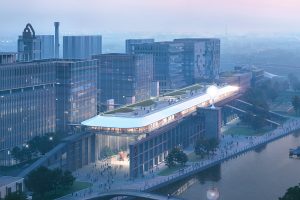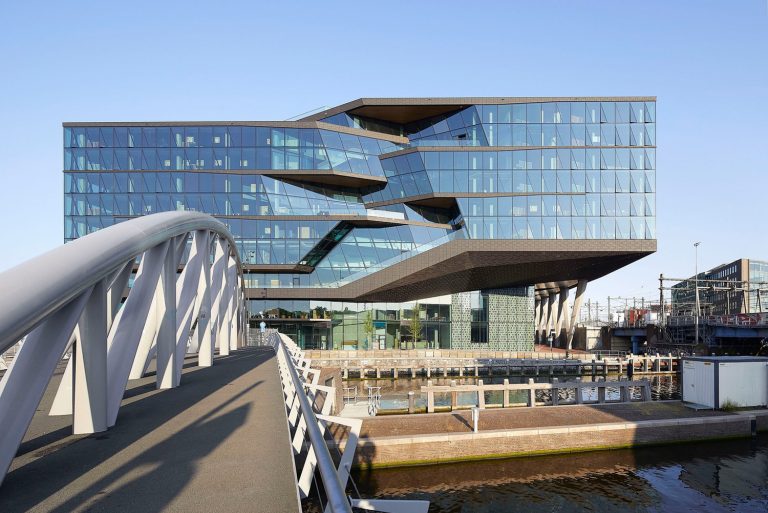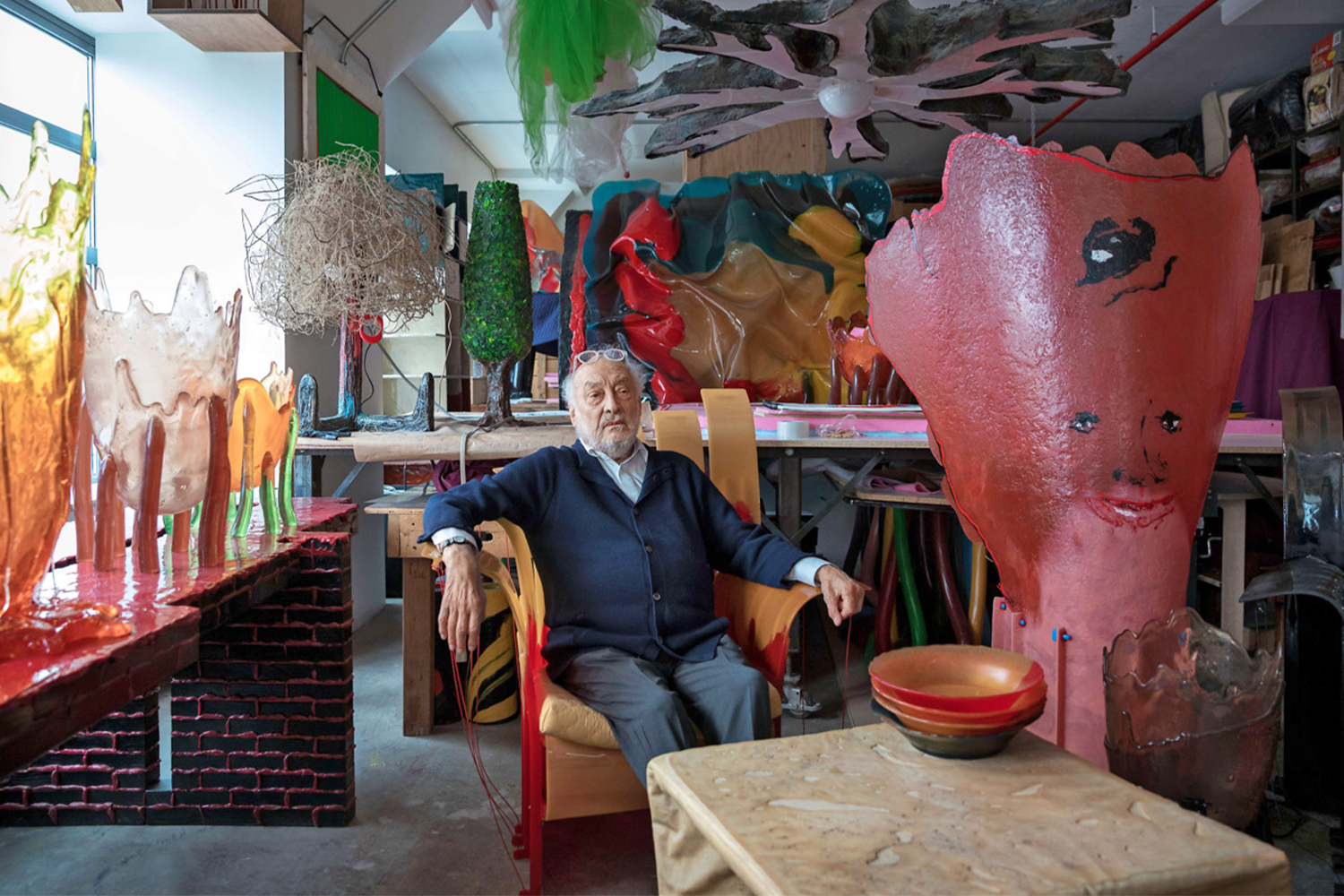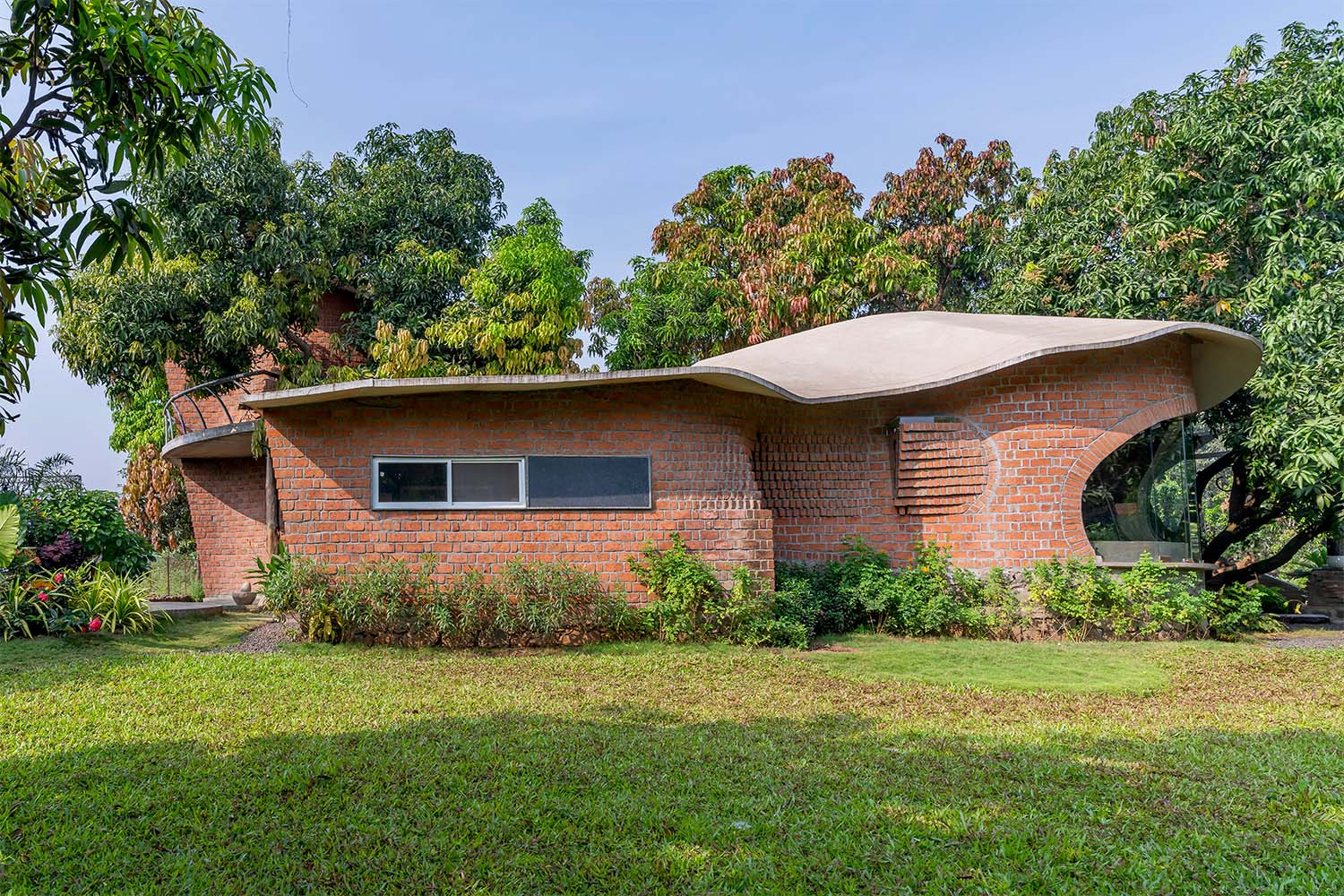
MAD Architects has revealed the renovation plan for the warehouse of the Shanghai Zhangjiang Cement Factory. By 2026, the renovation project is anticipated to be completed.
The renovation is focused on the “Wanmicang” warehouse, situated south of the Shanghai Zhangjiang Cement Factory in Shanghai. The renovation project undertaken by MAD Architects aims to establish a three-dimensional hierarchy of temporal and physical dimensions by juxtaposing historical and contemporary structures. The converted structure will revitalize the dilapidated industrial site in the manner of an ascending ark by converting the park into a multipurpose public waterfront area that incorporates shared offices, commerce, culture, and innovation.

Historically, the Shanghai Zhangjiang Cement Factory was among Shanghai’s three major cement factories. Constructed in 1971, it bore testimony to the evolution of urban construction in Shanghai over the subsequent half-century until its production ceased in 2013. The warehouse is the most significant existing structure in the cement factory and was once the initial point of arrival for ships transporting raw materials to the facility for processing. Like a vast painting scroll, its riverfront facade represents the collective urban memory of generations of Shanghai residents.
In recent times, the park has received commissions from both domestic and international pioneering architects to develop a cluster of structures that will continue to function as industrial landmarks of historical significance, including the “10,000-Metre Silo,” the “Cement Silo,” and the “Kiln Tail Tower.” The Shanghai Zhangjiang Cement Factory will be converted into a multifaceted campus featuring dynamic architectural spaces and facilities for research and development, cultural and sports services, and innovative commercial support by means of renovating and repurposing historical industrial structures.

“Industrial heritage is preserved and utilized not only because of the historical memories it carries, but more importantly because it gives the future a sense of history. So we don’t need to celebrate and consolidate industrial aesthetics here, but rather focus on the spirit of the contemporary and the future,” said Ma Yansong, founding partner of MAD Architects.
The renovation will maintain the warehouse’s intrinsic industrial aesthetic by substituting the old roof with a metallic “floating” volume resembling an ark. The contrast between the new metal’s polish and the old concrete’s roughness will revitalize the dilapidated factory building. Concurrently, the industrial space in its original state will be converted into an urban living area with multiple functions. In order for the long, mottled exterior of the original industrial structure to become an integral part of the new space’s memory and spirit, it has been repaired and reinforced. To establish a 24-hour urban public space outside, the west wall facing the Zhangjiang Sub-center was demolished and replaced with a full-face suspended glass curtain wall that is set back from the original wall.
The Shanghai Zhangjiang Cement Factory’s expansive, cheerful interior is visible from behind the curtain wall made of transparent glass. By capitalizing on the warehouse’s long, narrow, and lofty dimensions, the interior is imbued with a profound sense of depth. Upon entering the premises, one is met with the sight of an enormous ark unfolding. An ascending metal scaffold ascends to the roof, enticing individuals to commence an expedition into uncharted territories and the future. The tiered garden and tarnished walls of the former factory structure are situated beneath the ark. Collaboratively, the catering, artistic, and cultural enterprises that populate the gardens generate a thriving new community capable of revitalizing the greater urban area.


A glass curtain wall entirely divides the old and new structures; it is situated between the floating ark and the old factory wall. By illuminating the garden and being reflected on the stainless steel ceiling that is only faintly reflective at its apex, light permeates the entire area, imbuing it with an atmosphere of organic light and verdant foliage. As the angle of the sun shifts with the passage of time, the aged brickwork becomes animated, serving as a symbol of the site’s past and the passage of time.
To encourage occupants to appreciate the riverside vista, the first floor of the former factory building has been incorporated with the waterfront plaza and opened up along the river. Furthermore, a corridor was constructed within the structure’s core to link the piazza situated in the park with the riverbank. By connecting the two banks of the River with a newly crafted bridge, a greater number of locals will be able to utilize this new public space with greater convenience.
It was intended that the rooftop serve as an additional urban public space. This area is accessible to all and provides a distant view of the Chuanyang River. By gradually sloping downward, the eaves of the Ark mitigate any oppressiveness that the building’s height might impart to the banks of the Chuanyang River, while simultaneously maximizing the view from the rooftop terrace.
In order to achieve the ark’s floating appearance, additional columns, floor trusses, spanning trusses, and large spanning timbers are incorporated. To the fullest extent possible, the historical fluctuations are preserved by reinforcing and repairing the ancient walls with steel wire mesh, steel frames, and studs, among other materials.

Project Info
Project Name: The Ark | Shanghai Cement Factory Warehouse Renovation
Location: Shanghai, China
Year: 2021 – 2026
Type: Renovation
Site area: 6,742 square metres
Building area: 15,312 square metres
Building height: 24 metres
Principal Partner in Charge: Ma Yansong, Dang Qun, Yosuke Hayano
Associate Partner in Charge: Fu Changrui
Design Team: Zheng Chengwen, Zhang Tong, Zhou Rui, Shiko Foo
Client: Shanghai Quan Cheng Development & Construction Co., Ltd.
Executive Architects: Tongji Architectural Design (Group) Co., Ltd.
Structural Consultant: Archi-Neering-Design/AND Office
Façade Consultant: Shanghai CIMA Engineering Consulting Co. Ltd.
Interior Consultant: MAD Architects
Lighting Consultant: TS Shanghai Tungsten Lighting Design Co., Ltd.
Landscape Consultant: Design Land Collaborative Ltd.























































